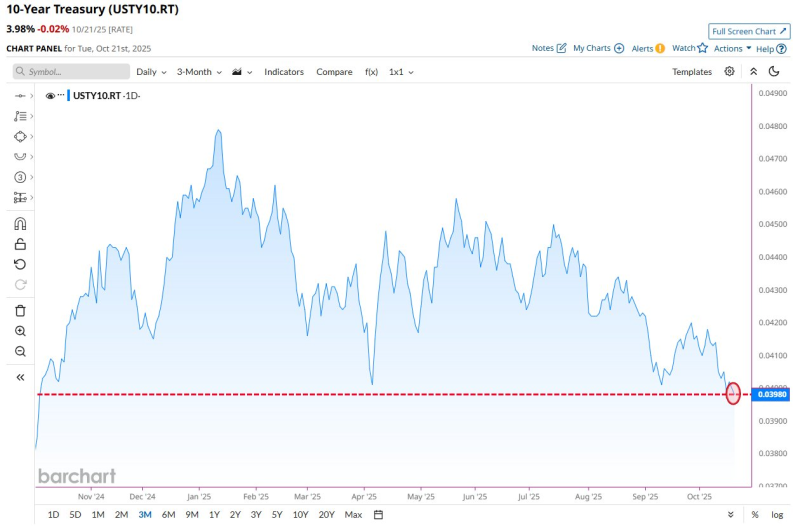● The 10-year U.S. Treasury yield dropped to 3.98% — the lowest closing level in more than twelve months. This shift shows investors are moving into government debt as economic data weakens and markets start pricing in Fed rate cuts heading into 2026.

● Lower yields suggest inflation is cooling, but they also hint at slowing growth. When yields fall like this, it often means people expect weaker demand ahead and are moving to safer assets. For banks and insurers, persistently low yields squeeze profit margins. Portfolio managers also face risks if they're overweight on long-duration bonds and the economy unexpectedly rebounds.
● Sub-4% yields mean cheaper borrowing across the board — mortgages, corporate loans, you name it — which could give the economy a short-term boost. But there's a flip side: lower yields mean less return on Treasury issuance while debt levels stay high. Some analysts have floated hiking profit or capital gains taxes to offset potential revenue losses, though that could backfire by scaring off investment during a shaky recovery.
● This is the first time the yield's dipped below 4% since late 2024, driven by softer consumer spending, slower job growth, and easing inflation. Traders are now betting on at least one rate cut by early 2026, and demand for long-term Treasuries is holding strong. As Barchart noted, "10-Year Treasury Yield closed yesterday at its lowest level in more than 12 months" — a technical milestone that underscores growing caution in the bond market.
 Peter Smith
Peter Smith

 Peter Smith
Peter Smith


